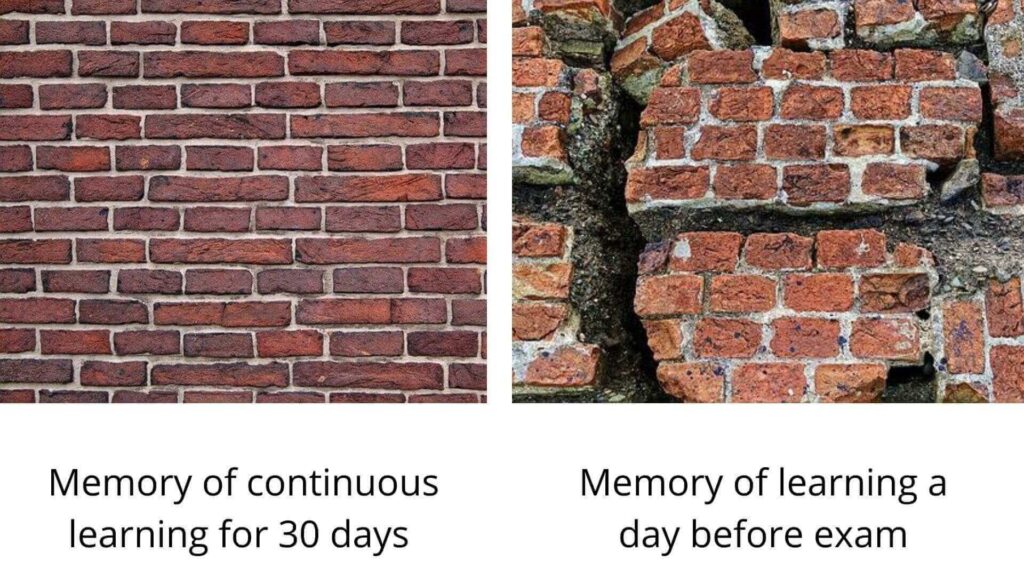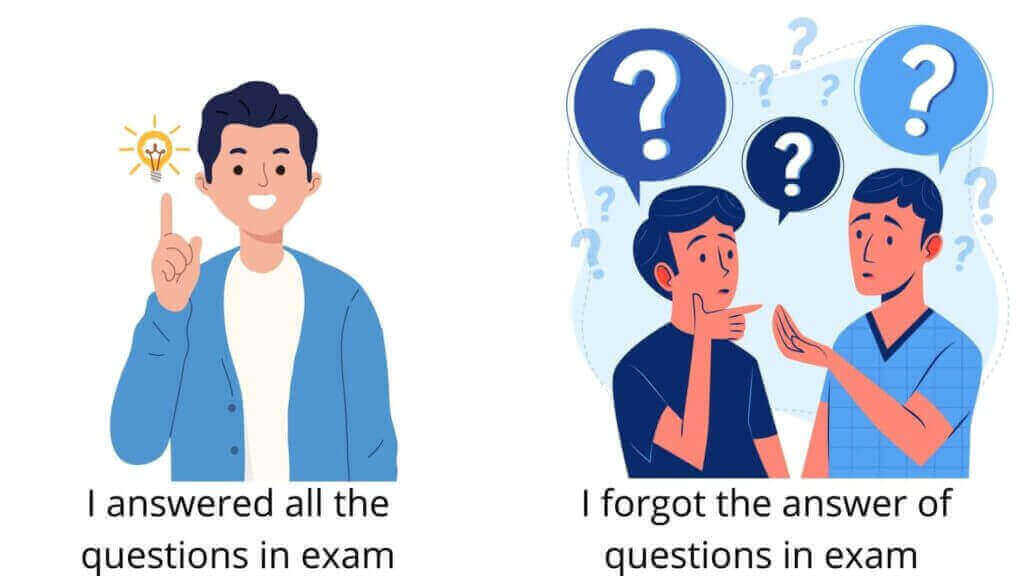The courses which are taught in school and colleges need to be memorize for scoring good marks in exams. If you don’t score, then you are a fool.
Ohhh, isn’t that ridiculous!!!!
Decades have gone, but we are not changing the way of our learning in schools and colleges. Memorizing the information of a class might be okay in a single go, but it’s annoying for multiple classes.
Many students think they are dumb, having low memory power. That’s not the case, everyone can increase their memorizing power. But first you need to stop blaming yourself or your kids and start thinking. What are the ways or techniques, how could you be able to memorize the lectures in a faster and easier way for scoring higher in exams?
In this blog we are providing some memorizing techniques for you.
Some memory technique for students
Understand the topic
You can’t memorize anything and everything, unless you understand the topic in depth. Understanding the topic will help you to remember faster because no one can memorize any information which does not make any sense. Also, it would be easier to revise faster.
For understanding the concept behind any topic you need to use feynman technique.
How to use feynman technique to learn, understand & memorize faster
Richard Feyman was the great physicist who won the Nobel prize. The secret of his greatness was his ability to make the complex stuff easier. The technique he uses is known feynman technique, which has four steps.
Step 1: identify a topic that you want to learn
The first step of the technique is to identify the topic that you want to learn conceptually. Write all the information you know about the topic, add more details as you come across something more informative. For you it might be the subject that you want to learn for a school exam or competitive exam.
Use mind map tools to build memory map
While collecting all the important information about the topic. you will wonder that all this information will create a big mess and organizing that information will take a lot of time. So you can use a mind map tool which will make organizing the notes easier. The best mind mapping tools are xmind, mind meister, etc. or you can google it for more information.
Step 2: Teach the topic like you are teaching to a 12 year old kid.
There is a saying by MORTIMER ADLER “the person who says he knows what he thinks but cannot express usually does not know what he thinks”. The idea behind this step is to force yourself to find a way to understand the concept . If you aren’t able to understand the concept then you can’t memorize while you are reviewing. The best way of learning is by teaching to someone else.
Story method memory technique
One thing to remember while making notes, the simpler is more easier to memorize.
The best way to simplify your note is, bring a story into it. Complex things can be easily memorized by the use of story.
Step 3: review the topic and find the gap
You might mistakenly add something extra and may leave out valuable information. However, you can overcome this by reviewing your notes and finding the knowledge gap.
Step 4: organize the concept
To know how better your notes are, simply test it on someone else. Explain the concept and ask them which part they find difficult to understand, what other questions did they ask?
When you are satisfied, keep the note and review the notes several times in a year.
Know the capacity of your brain
Human brain is considered to be the world’s best and most complex computer. But there is no manual on how to operate it. Your brain has limitless capacity to memorize anything. But it erases useless information and stores the important one. This process is automatic and you don’t have any control over it.
The research done by the University of Waterloo shows the human brain forgets about 50-60% of information in a day. And if you do nothing about this information, after 30 days you will retain about 2-3% of the whole information.
The question is how the information about brain capacity would help you to improve long term memory to study without forgetting.
How to learn & memorize faster without forgetting
You need repetition, specifically spaced repetition to improve your long term memory. After you learn something you need to review that topic again and again. This will strengthen your memory over a period of time.
However you need to strategically place the perfect timing for spaced repetition. Mostly it is recommended to review the topic after 10 minutes of a complete lecture. Then revise the topic with a gap of a day, a week, a month, then three months subsequently.
How the use mnemonics help us to study and memorize faster
There is no doubt that with repetition one can increase the memory power. But when it comes to remembering the tables and diagrams then this process might be a bit difficult to use. The table contains a lot of data and numbers, one can’t simplify those numbers. So, we need to use the mnemonics.
The classic example of use of mnemonics is in memorizing the periodic table. By the use of mnemonics we can remember all the elements of the periodic table. You use mnemonics in memorizing any complex data of any subject.
Memory technique: How to focus on study for long hours
You might have a question that most students asked us. What is the use of all the repetition and all those memory technique if I can’t focus longer. Yes, it’s a very big problem. Most of the students lack focus in the school as it’s about 6-7 hours long. And maintaining focus for that long is quite daunting.
To overcome this problem you can use a technique called pomodoro. This technique was created by Francisco Cirillo. According to this technique, you need to take a short break after every 25 mins to memorize a small chunk for 5 minutes and then proceed with the work. After 4-5 breaks take a bigger break and relax. Then repeat the pomodoro once again.
You can discuss with your teacher in the school to help you put in place pomodoro between lectures. Or you may take a 5 minutes rest between the two lectures.
Mistakes that causes the loss of memory
You might be thinking “yeah I got all the information to boost my memory I will use this before the exam”. This is the mistake that most students make and say man all these memory technique are not working.
I know all these techniques will never work unless you don’t consider the chunking technique.
Chunking technique for memory
I have a task for you “eat a big hamburger in one bite”.
It’s crazy, no one can eat in a bite. Yeah, I can’t eat either. Human brain also works in that way. Our brain cannot memorize a large piece of information in a single lecture. You need to break down the information in small chunks and memorize the chunk.
Remember to give enough time between the chunk of information to memorize well. You might be thinking why should there be enough time between learning. Why not study all this information in a small gap?
Can you build a footwall in a day? It might not be possible to build that in a day. You need to build a foot on day 1. Then let it solidify for a day then build another foot layer of wall the next day. And by the 10th day you will complete the construction of the 10 foot wall.

In a similar way your brain works. It cannot keep all the information in a day, give it a gap. Let it absorb the information and then add the next chunk of information. That way you will memorize almost all the information.
Final thoughts
All the memory techniques discussed above are backed with scientific experiments. Students can try this technique to learn just about anything. These technique are very effective to boost your memory power and will help you to score good marks in exams.
look out to our previous post if you want to score good marks.

